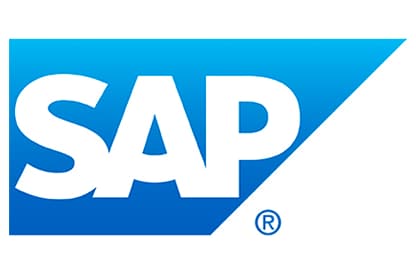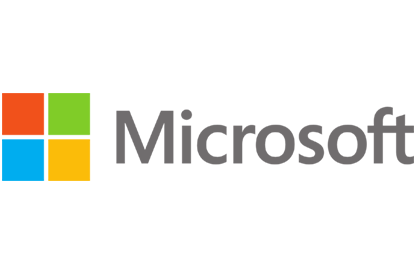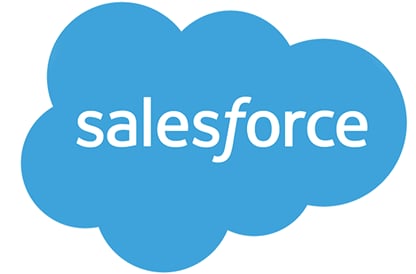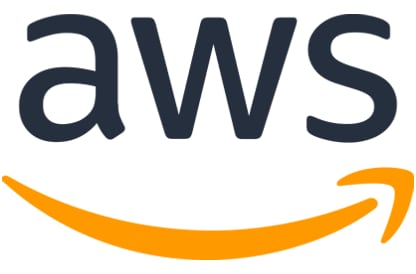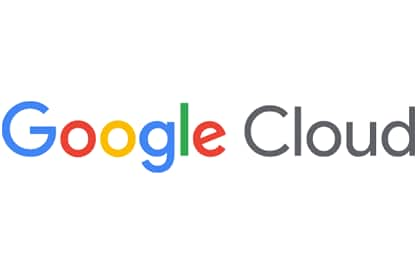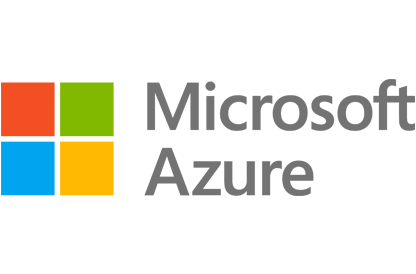Why OpenText
Why OpenText
Overview Why OpenText
OpenText brings decades of expertise to help you unlock data, connect people and processes, and fuel AI with trust
Manage and connect data
Unify data seamlessly across your enterprise to eliminate silos, improve collaboration, and reduce risks
AI-ready information
Get AI-ready and transform your data into structured, accessible, optimized information
Built-in security and compliance
Meet regulatory and compliance requirements and protect your information throughout its lifecycle
Empowering people
Overview Empowering people
OpenText helps people manage content, automate work, use AI, and collaborate to boost productivity
Customers
See how thousands of companies around the world are succeeding with innovative solutions from OpenText
Employees
Our people are our greatest asset; they are the life of the OpenText brand and values
Corporate Responsibility
Learn how we aspire to advance societal goals and accelerate positive change
Partners
Find a highly skilled OpenText partner with the right solution to enable digital transformation
How we compare
Content Management
Service Management
Deploy anywhere
Overview Deployment options
Explore scalable and flexible deployment options for global organizations of any size
Sovereign cloud
Local control. Global scale. Trusted AI
Private cloud
Your cloud, your control
On-premises
Free up resources, optimize performance and rapidly address issues
Public cloud
Run anywhere and scale globally in the public cloud of your choice
AI leadership
Overview Aviator AI
See information in new ways
OpenText™ Aviator AI
AI that understands your business, your data, and your goals
OpenText™ MyAviator
Say hello to faster decisions. Your secure personal AI assistant is ready to get to work
OpenText™ Business Network Aviator
Gain better insights with generative AI for supply chains
OpenText™ Content Aviator
Power work with AI content management and an intelligent AI content assistant
OpenText™ Cybersecurity Aviator
Improve your security posture with AI cybersecurity and agile threat detection
OpenText™ DevOps Aviator
Enable faster app delivery, development, and automated software testing
OpenText™ Experience Aviator
Elevate customer communications and experiences for customer success
OpenText™ Service Management Aviator
Empower users, service agents, and IT staff to find the answers they need
Aviator AI
Overview Aviator AI
See information in new ways
OpenText™ Aviator AI
AI that understands your business, your data, and your goals
OpenText™ MyAviator
Say hello to faster decisions. Your secure personal AI assistant is ready to get to work
OpenText™ Business Network Aviator
Gain better insights with generative AI for supply chains
OpenText™ Content Aviator
Power work with AI content management and an intelligent AI content assistant
OpenText™ Cybersecurity Aviator
Improve your security posture with AI cybersecurity and agile threat detection
OpenText™ DevOps Aviator
Enable faster app delivery, development, and automated software testing
OpenText™ Experience Aviator
Elevate customer communications and experiences for customer success
OpenText™ Service Management Aviator
Empower users, service agents, and IT staff to find the answers they need
Analytics
Overview Analytics
Predict, act, and win with real-time analytics on a smarter data platform
OpenText™ Aviator Search(AI)
Give users access to the answers they need, faster and easier, with multi-repository AI-based search that lets you contextualize everything from clicks to conversations
Business Network
Overview Business Network
Connect once, reach anything with a secure B2B integration platform
Content
Overview Content
Reimagine knowledge with AI-ready content management solutions
OpenText™ Content Aviator(AI)
Supercharge intelligent workspaces with AI to modernize work
Cybersecurity
Overview Cybersecurity
Integrated cybersecurity solutions for enterprise protection
OpenText Cybersecurity for SMBs & MSPs
Purpose built data protection and security solutions
OpenText™ Cybersecurity Aviator(AI)
Reinvent threat hunting to improve security posture with the power of agile AI
DevOps
Overview DevOps
Ship better software—faster—with AI-driven DevOps automation, testing, and quality
Experience
Overview Experience
Reimagine conversations with unforgettable customer experiences
Observability and Service Management
Overview Observability and Service Management
Get the clarity needed to cut the cost and complexity of IT operations
OpenText™ Service Management Aviator(AI)
Redefine Tier 1 business support functions with self-service capabilities from private generative AI
APIs
Overview APIs
Build custom applications using proven OpenText Information Management technology
OpenText™ API Services
Build it your way with OpenText Cloud APIs that create the real-time information flows that enable custom applications and workflows
Device and Data Protection
Overview Device and Data Protection
Protect what matters, recover when it counts
Unified Endpoint Management Tools
- OpenText™ Endpoint Management
- OpenText™ ZENworks Suite
- OpenText™ ZENworks Service Desk
- OpenText™ ZENworks Configuration Management
- OpenText™ ZENworks Endpoint Security Management
- OpenText™ ZENworks Full Disk Encryption
- OpenText™ ZENworks Endpoint Software Patch Management
- OpenText™ ZENworks Asset Management
Solutions
Trusted Data & AI
Overview Trusted Data & AI
Secure information management meets trusted AI
OpenText AI Data Platform
A unified data framework to elevate data and AI trust
OpenText Aviator Studio
A place where you can build, deploy, and iterate on agents in your data's language
OpenText Discovery
A set of tools to help ingest data and automate metadata tagging to fuel AI
OpenText Data Compliance
A suite of services and APIs that make governance proactive and persistent
OpenText Aviator AI Services
Professional services experts who help you on your AI journey
Information Reimagined
Overview Information Reimagined
Get greater visibility and sharper insights from AI-driven information management. Ready to see how?
Knowledge reimagined
Transform daily work with enterprise content management powered by AI
Service Management reimagined
Cut the cost and complexity of IT service management, AIOps, and observability
Connections reimagined
AI-powered B2B integration for supply chain success
Conversations reimagined
Drive value, growth, and loyalty with connected customer experiences
Engineering reimagined
Agile development and software delivery? It only seems impossible
Security reimagined
Cybersecurity for the Enterprise
Decisions reimagined
Unlock insights with AI data analytics
Artificial Intelligence
Overview Aviator AI
See information in new ways
OpenText™ Aviator AI
AI that understands your business, your data, and your goals
OpenText™ MyAviator
Say hello to faster decisions. Your secure personal AI assistant is ready to get to work
OpenText™ Business Network Aviator
Gain better insights with generative AI for supply chains
OpenText™ Content Aviator
Power work with AI content management and an intelligent AI content assistant
OpenText™ Cybersecurity Aviator
Improve your security posture with AI cybersecurity and agile threat detection
OpenText™ DevOps Aviator
Enable faster app delivery, development, and automated software testing
OpenText™ Experience Aviator
Elevate customer communications and experiences for customer success
OpenText™ Service Management Aviator
Empower users, service agents, and IT staff to find the answers they need
Industry
Overview Industry solutions
Improve efficiency, security, and customer satisfaction with OpenText
Energy and resources
Transform energy and resources operations with cloud, cybersecurity, and AI
Financial services
Boost customer experience, compliance, and efficiency with AI
Government
Reimagine your mission with government-secure information management
Healthcare and life sciences
Improve care delivery and patient engagement with AI-powered solutions
Legal
Modernize legal teams with automated, AI-powered legal tech solutions
Manufacturing
Modernize manufacturing operations and logistics to reduce costs and ensure compliance
Retail and consumer goods
Enhance consumer engagement with omnichannel retail solutions and AI
Enterprise Application
Overview Solutions for Enterprise Applications
Run processes faster and with less risk
Services
Services
Overview Services
Achieve digital transformation with guidance from certified experts
Professional Services
Modernize your information management with certified experts
Customer Success Services
Meet business goals with expert guidance, managed services, and more
Support Services
Turn support into your strategic advantage
Managed Services
Free up your internal teams with expert IT service management
Learning Services
Discover training options to help users of all skill levels effectively adopt and use OpenText products
Professional Services
Overview Professional Services
Modernize your information management with certified experts
Customer Success Services
Overview Customer Success Services
Meet business goals with expert guidance, managed services, and more
Support Services
Overview Support Services
Turn support into your strategic advantage
Managed Services
Overview Managed Services
Free up your internal teams with expert IT service management
Learning Services
Overview Learning Services
Discover training options to help users of all skill levels effectively adopt and use OpenText products
Partners
Find a Partner
Overview Find a partner
Information is the heartbeat of every organization. We build information management software so you can build the future
Cloud Partners
Overview Cloud Partners
OpenText partners with leading cloud infrastructure providers to offer the flexibility to run OpenText solutions anywhere
Enterprise Application Partners
Overview Enterprise Application Partners
OpenText partners with top enterprise app providers to unlock unstructured content for better business insights
Partner Solutions
Overview Partner Solutions
Discover flexible and innovative offerings designed to add value to OpenText solutions
Resources for Partners
Overview Resources for Partners
Discover the resources available to support and grow Partner capabilities
Support
Overview Customer Support
Get expert product and service support to accelerate issue resolution and keep business flows running efficiently
Resources
Overview Resources
Explore detailed services and consulting presentations, briefs, documentation and other resources
Choose your region:
Europe, Middle East and Africa
Asia–Pacific
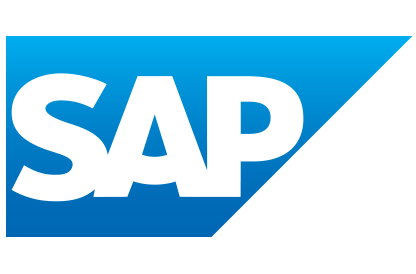 SAP
SAP
SAP’s Product Security Strategy mandates static code analysis during product development to help secure applications against cyber threats, protecting customers against financial losses through software malfunctions, loss or damage of intellectual property, or business interruption

Products and services
Outcomes
- Protection of SAP and its customers against software-related financial losses, business interruption, and damage to corporate brand
- Reduced cost to repair as a result of identifying and remediating vulnerabilities early in the software development lifecycle
- Ability to efficiently perform static analysis on new applications and previous revisions
Challenge
To perform static analysis on application code written in Java, C#, JSPs, and other languages to identify and remediate vulnerabilities early in the software development lifecycle.
“I estimate that we have around 80 million unique lines of Java code,” says Uwe Sodan, TIP Security, Engineering Excellence and Education, Code Analysis Team Manager at SAP. “Furthermore, because we need to maintain older versions of many applications, we often scan a given product multiple times. We always scan the newest version, of course; but whenever we find something that needs to be repaired, we need to consider how many older versions also require the fix.”
Details
Overview
SAP’s Product Security Strategy mandates static code analysis during product development to help ensure that all applications are secure and resilient against cyber threats, thereby protecting customers—and the company itself—against financial losses through software malfunctions, loss or damage of intellectual property, or business interruption.
Fortify software is important in realizing our Product Security Strategy because it helps us detect vulnerabilities early in the development lifecycle. This is essential...because the earlier we find vulnerabilities, the more efficiently we can repair them. I can definitely say that Fortify software has helped SAP in producing more secure code.
SAP uses its own static analysis tool for applications written in the proprietary ABAP language; but for Java, the most common programming language at SAP after ABAP, the company decided to leverage third-party expertise. SAP chose the industry leader and has now fully integrated Fortify software into its development lifecycle.
Solution
Fortify at work
At SAP, static code analysis of applications written in Java, C#, JSPs, and a number of other programming languages has been designed and implemented together with OpenText™ (formerly Micro Focus) and is based on the Fortify Software Security Center (SSC) and Fortify Static Code Analyzer (SCA) by OpenText (formerly Micro Focus) solutions.
Fortify Software Security Center helps organizations to manage security risk by ensuring that software—whether it is built for the desktop, mobile, or cloud—complies with internal and external security mandates. With advanced static and dynamic security testing capabilities and an integrated framework for proactive security management, Fortify SSC helps to identify and mitigate risks within the development process and legacy applications and throughout the entire software development lifecycle. Although SAP’s development groups are decentralized, the company can consolidate and track all results within Fortify SSC.
Fortify Static Code Analyzer is part of the Fortify SSC solution and uses award-winning static analysis to provide far-reaching vulnerability detection in source code. Fortify SCA pinpoints the root causes of security vulnerabilities in source code, prioritizes results sorted by severity of risk, and provides detailed, line-of-code guidance on how to fix vulnerabilities. Fortify SCA helps organizations ensure that their software is trustworthy, reduce the cost of finding and fixing application vulnerabilities, and establish a foundation for secure coding best practices.
“We have a central group at SAP that is responsible for product security standards,” explains Sodan. “Our Product Security Strategy is targeted at enabling our decentralized development teams to create secure products through central guidance; the security requirements are part of the nonfunctional requirements that are centrally collected, maintained, documented, and rolled out. We have testing measures throughout the development lifecycle, and static analysis is mandatory. For this reason, Fortify software is an essential component of our business success.”
Support from OpenText (formerly Micro Focus) Services is a valuable part of the overall solution. “We leveraged the expertise of on-site resident consultants for two years, and that was very helpful to us,” says Sodan. “They taught my team to understand the Fortify software, not only in terms of the tool, but also in terms of processes.”
Good things
Asked what he values most about the software, Sodan identifies a number of positive features. “For one thing, it has very good security coverage,” he says. “It also comes with collaboration capability in the Fortify Software Security Center that is important for us. We want a central infrastructure where we can store all the scan results, in order to protect the data and control the access to it; at the same time, we want to have it deployed in such a way that the different development teams can easily work on the results. Fortify software fits our development model very well.”
Another significant advantage is the ability to configure Fortify software to meet specific customer needs. “This covers both the sorting and prioritizing of results, as well as tuning,” explains Sodan. “Using the Custom Rules feature, we can create our own rules and modify the behavior of the tool to adapt it to our proprietary libraries, interfaces, platforms, and frameworks.”
As developer efficiency is one of SAP’s primary goals, the Fortify solutions have been enriched with SAP custom rules and fix recommendations. Sodan adds that good documentation on how to interpret findings, coupled with detailed guidance on fixing vulnerabilities, further enhances the value of Fortify software in the SAP development environment.
A driving factor in the use of Fortify software is the need to comply with SAP’s Product Standard Security Requirements. “All software must avoid cross-site scripting, SQL injection, path traversal, memory corruption, XML entity, buffer overflow—the list goes on and on,” says Sodan. “We also typically refer to the OWASP Top 10 and the CWE/SANS Top 25 vulnerabilities. This is the scope we cover using static analysis, and any SAP product must be free of these vulnerabilities. We count on Fortify software to help us meet these stringent requirements, protecting both our customers and our corporate brand.” Even as threats become more sophisticated and targeted, static code analysis enables SAP to stay ahead of the game by identifying and mitigating vulnerabilities before they can be exploited.
Fix it early
SAP has fully integrated Fortify software into its development lifecycle and, while hard metrics are not yet available, the cost benefit is clear. “The most expensive fixing is when a bug makes it all the way into production, and a customer or an external security expert reports it back to us,” says Sodan. “According to different studies, the cost of fixing vulnerabilities in already-released software versus during the development lifecycle is a ratio of about 100 to 1. This is why we consider it so important to check our code as early as possible.”
Nearly a thousand developers at SAP are active Fortify software users. “It’s not every Java developer, but we target at least one or two in each development team,” explains Sodan. The Eclipse plug-in for Fortify SCA is especially useful in this environment. “This plug-in enables developers to perform instantaneous checks, so they can improve the code directly in the process,” says Sodan. “I also like the integration between the plug-in and the central server; once people understand how it works, they can use the scan results directly in their normal development environment. That’s a good thing.”
We leveraged the expertise of on-site resident consultants for two years, and that was very helpful to us. They taught my team to understand the Fortify software, not only in terms of the tool, but also in terms of processes.
SAP has a comprehensive security response feedback process. Any potential vulnerabilities that are reported externally are fixed as part of the security response process; then, an additional feedback step analyzes the vulnerability pattern to determine whether it can be detected using static analysis. If the answer is “yes,” and if the affected code is in Java or one of the other languages for which SAP uses Fortify, a root cause analysis investigates whether the vulnerability was not yet in the scope of the scan or if some adjustment to the tool is needed. This feedback process enables SAP to continuously adjust and optimize its usage of Fortify software.
“In terms of the number of different programming languages that Fortify covers, as well as the number of different check categories corresponding to vulnerability types or patterns, I think the solution is quite complete,” concludes Sodan. “Fortify software is important in realizing our Product Security Strategy, because it helps us detect vulnerabilities early in the development lifecycle. This is essential for us, because the earlier we find vulnerabilities, the more efficiently we can repair them. I can definitely say that Fortify software has helped SAP in producing more secure code.”
Results
The Fortify portfolio protects SAP and its customers against software-related financial losses, business interruption, and damage to corporate brand through its enhanced application security. In addition, the cost to repair has been reduced because they can identify and remediate vulnerabilities early in the software development lifecycle. And, thanks to the ability to efficiently perform static analysis on new applications and previous revisions, SAP has scanned over 178 million lines of code to date.
Implementing Fortify has also strengthened the skills of SAP’s developers and improved its development process. Through in-depth training on Fortify software tools and processes, developer awareness of secure coding practices has been significantly enhanced. The Eclipse plug-in to Fortify facilitates instantaneous security checks during code development. Fortify also enables detailed, line-of-code guidance on fixing identified vulnerabilities. In addition, SAP can customize Fortify software to meet specific customer requirements. And, expert on-site consulting to assist with pilot projects and product customization was key to a successful implementation.
About SAP

SAP SE is the revenue leader in enterprise software and software-related services. To maintain this position, SAP is committed to providing the highest quality software solutions. This means going beyond simply ensuring that applications perform as designed, by integrating risk and security management into their Idea2Market (I2M) process. Fortify is a key element in this process. As of 2012, SAP had performed static analysis on approximately 178 million lines of critical Java code using Fortify.
